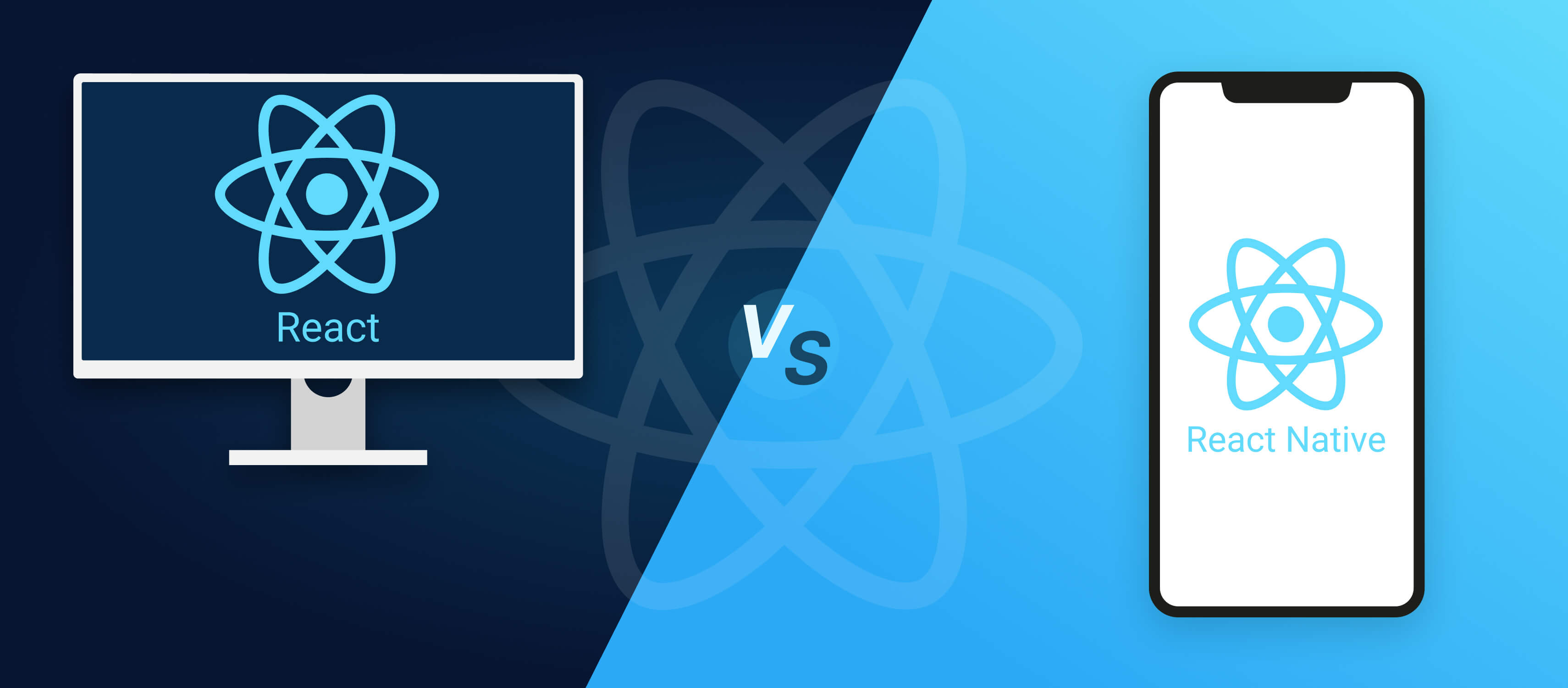Table of Contents
- What is React?
- What is React Native?
- Comparison of React and React Native
- Ending Notes
- Frequently Asked Questions
Among many confusing comparisons around similar names, React Native vs React comparison is the most common to tech enthusiasts and business stakeholders. Under the so-called similarity of their first name, React and React Native are two different frontend technologies with different strengths, weaknesses, features, and advantages in their kitty.
If you want to get rid of this confusion and understand how they differ from one another, you should read this blog post till the end.
What is React?
React is ReactJs which is a widely popular open-source JavaScript library. React development particularly became popular for building robust and feature-rich single-page web apps. It is also used by developers to develop cross-platform mobile apps.
When Facebook developed this library and launched it in 2011 it became instantly popular because of its flexibility and adaptability to shape the user experience. React by streamlining the UI design makes things quicker for developers. Developers using React also enjoy greater freedom to shape any UI as per business requirements.
With React development, you have the flexibility of integrating third-party plugins and libraries with your existing codebase. This modular development approach of React made it popular among businesses and startups who look for scalability to keep pace with their business growth. React allows developers to build single-page web apps, Progressive Web Apps (PWAs), and static websites.
Let’s now have a look at the core features to understand the React advantages:
- Modular Architecture: React ensures optimum reusability of different components thanks to its modular architecture.
- Virtual DOM: Thanks to Virtual DOM, updating and rendering changes can be carried out without doing anything with the actual DOM. This ensures faster rolling out of updates.
- Declarative UI: Developers using React can describe the look and feel of the desired user interface. Developers enjoy more control over how the web app should display, interact, and behave in different contexts.
- One-Way Data Binding: One-way data flow offers a key React advantage. It ensures more stability and control for the developers to maintain optimum app performance.
- JSX Syntax: React uses JSX syntax which is similar to HTML syntax written within the JavaScript environment. This syntax gives React a lethal combination of the simplicity of HTML and the dynamism of JavaScript to build interactive UI components.
- Developer Tools: You can access a rich repository of tools through React Developer Tools. You have tools for every development and QA testing need here.
- Robust Community Support: One of the key React advantages is the support of a large developer community that frequently enriches by adding resources, third-party libraries, and help with regular updates.
What is React Native?
It is a cross-platform framework, used primarily for mobile app development. The framework was developed by Facebook and was launched in 2011. React Native development quickly rose to popularity as React Native developers by using a single codebase can build apps that successfully run on both iOS and Android mobile app platforms while ensuring a truly native user experience.
Let’s understand the React Native cross-platform app development with a bit more detail. React Native while using the same core codebase for both iOS and Android, adheres to the native UI requirements. React Native mobile app development does this by bridging native UI components of iOS and Android platforms.
Here are the core features of React Native:
- Cross-Platform Development: React Native uses a single codebase for both iOS and Android platforms ensuring faster and cost-efficient development.
- Native-Like UI & Performance: React Native uses native UI bridge and APIs to create iOS and Android versions of the same app with native iOS and native Android look, feel, and performance.
- Modular Architecture: React Native development is benefited by a modular architecture that allows developers to reuse components.
- Hot Reloading: React Native developers thanks to the Hot Reloading feature can render the changes for the users in real-time. This ensures faster development and testing cycles for the developers.
- Access to Native APIs: React Native developers through platform-specific native modules can seamlessly access native iOS and Android device functionalities such as camera, GPS, and push notifications.
- A Library of Pre-Built Components: React Native comes with a rich library of built-in components to streamline development without compromising on the native UI look and feel. Developers can access the View, Text, and Image components of both platforms through this library.
- Third-Party Plugin Support: React Native mobile app development allows easy integration with third-party libraries and modules to create app functionalities required as per the business goal. This significantly reduces both development time and effort.
- Robust Community Support: React Native has a robust developer community that frequently provides useful resources, tutorials, and troubleshooting tips and suggestions.
React and React Native: A Head-to-head Comparison of Advantages
In the React Native vs React comparison, now that we have explained the core features of both technologies, it is time to explore their advantages as well.
Performance
The lightning-fast performance of React is ensured by the virtual DOM. Enterprise apps that need to manage huge volumes of data with real-time updating and manipulation capabilities are more likely to prefer React.
React Native development on the other hand relies more on Native APIs for fast-paced loading and seamless user interactions across app screens. The use of JavaScript threads also ensures the optimum responsiveness of UI elements. It is great for customer-focused mobile apps.
Platform Support
React is more focused on web applications and leverages tried and tested web technologies like HTML, CSS, and JavaScript.
React Native is created for cross-platform mobile app development targeting both iOS and Android.
Faster Development
One of the key React advantages is to help faster build time by streamlining workflows, offering robust tools like Create React App, and allowing developers to use other third-party build environments like Babel and Webpack.
React Native for faster development relies on the hot reloading feature that ensures updating code changes in real time. React Native developers can also use third-party tools for further simplification of the workflows.
Read More: Flutter vs React Native vs Xamarin vs Ionic
UI Components
React for dynamic and responsive UI components leverages libraries Material-UI and Ant Design.
React Native comes loaded with built-in UI components like View, Text, and Image for both platforms.
Learning Curve
React is comparatively easier to learn and upskill if you are familiar with basic web development technologies like HTML, CSS, and JavaScript. This is why any company having developers versed in these basic web technologies should embrace React to reduce training and upskilling costs.
React Native developers, on the other hand, need good knowledge of native UI components, APIs, and guidelines. Compared to React, React Native comes with a steeper learning curve.
Scalability
React thanks to the modular components and virtual DOM help scale apps quickly as per evolving business requirements.
React Native mobile app development also ensures awesome scalability by leveraging state management and Redux libraries.
Case Studies & Comparison
React is more appropriate for businesses that prioritize robust and scalable web apps for their enterprise operation. React is also great for building feature-rich single-page apps with features like seamless navigation, state management, and lazy loading. Top brands that successfully used React for their platforms include names like Facebook and Netflix.
React Native is more appropriate for enterprises with a mobile-first approach. React Native is also preferred by startups who need to establish their presence quickly through an app footprint. Leading mobile apps that leveraged React Native development include brands like Airbnb and Instagram.
Ending Notes
So unlike most other comparisons, there is no scope for judging good or bad here. Both have their unique strengths, ideal business use cases, and advantages. At times, you can also use React for your enterprise web app and React Native for your business mobile app. There is no inherent contradiction in it.
React vs React Native: Frequently Asked Questions to Clear Your Doubts!










